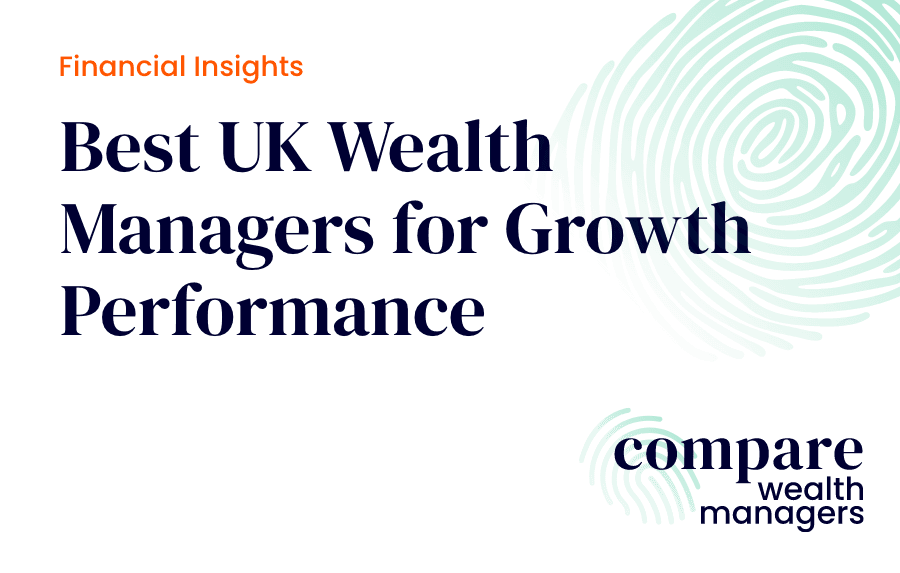Contents
Key Takeaways
Private markets remain hard to access – decade-long lock-ups limit private client access to real estate, infrastructure, and private equity.
Daily dealing real asset funds solve the liquidity gap – using REITs and listed investment trusts, investors gain illiquid market exposure with daily trading flexibility.
Five core real asset categories – real estate, infrastructure, natural resources, asset finance, and specialist lending provide diversification, income, and long-term growth.
Diversification linked to megatrends – assets align with themes like decarbonisation, renewable energy, and gold demand, adding resilience beyond equities and bonds.
Discounts to NAV create opportunity – listed funds often trade below net asset value (NAV), letting investors buy quality assets at a discount with potential upside.
Designed for private clients seeking flexibility – daily dealing funds fit neatly into portfolios, offering alternative investments without decade-long commitments.
Private markets have long been the preserve of big institutions, offering attractive returns and diversification. For individual investors, though, the lack of liquidity has been a major barrier as you can’t easily sell when circumstances change. The good news? A new generation of ‘daily-dealing’ real asset funds is starting to change the game [1].
Beyond property and infrastructure, opportunities also include private market assets such as private debt and venture capital, but the illiquidity of these structures has limited accessibility for smaller portfolios.
To explore this shift, we spoke with Luke Hyde-Smith, manager of the Waverton Real Asset Fund at W1M Wealth & Investment Management (W1M). Since launching the fund in 2018, Hyde-Smith has focused on giving private clients access to areas of the market traditionally reserved for institutions. His perspective highlights both the opportunities and the safeguards investors should keep in mind as private markets evolve.
Why Most Private Markets Stay Locked up and What Investors Miss Out On?
Private markets have long promised diversification and attractive returns. But for most investors, there’s a catch: capital is locked away for years, often a decade or more. While this trade-off suits large institutions like pension funds, it has kept many individuals from accessing asset classes such as real estate, infrastructure, private debt, or venture capital.
As Hyde-Smith explains:
“The assets themselves remain compelling, they can deliver growth, income, and exposure to powerful long-term themes, but the illiquid structures have traditionally kept them out of reach for private clients.”
The Case for Real Assets in a Modern Portfolio
Since its launch in 2018, the Waverton Real Asset Fund has aimed to open up areas of the market often overlooked in traditional portfolios. Its strategy rests on five building blocks:
- Real estate – offices, housing, logistics
- Infrastructure – transport, utilities, renewable energy
- Natural resources – energy, metals, agriculture
- Asset finance – lending secured against physical assets
- Specialist lending – niche credit and direct lending markets
What unites these categories is their link to the real economy. From property to lending, they provide exposure to physical, income-generating assets that can deliver both growth and resilience. [2].
They also align with powerful themes: infrastructure supports the global energy transition, gold acts as a store of value, and lending diversifies portfolios beyond equities and bonds. Together, real assets can smooth outcomes across different market cycles.
Diversification and Long-Term Trends
For investors, real assets also bring diversification. They behave differently from equities and bonds, helping portfolios weather volatility in public markets. In particular, they can complement exposure to public companies and public exchanges, smoothing outcomes across different market cycles and market conditions [3].
At the same time, they are aligned with powerful structural themes, such as decarbonisation in infrastructure or gold as a defensive asset and store of value. Infrastructure offers long-term income potential from essential assets, while gold provides stability and diversification during periods of market stress. Together, these themes support value creation and resilience across different asset classes.
How Investors can Access Private Markets: Three Routes Compared
According to Hyde-Smith, there are three main access points: "listed vehicles, long-life 10-year lock-up vehicles, and the evolution of the semi-liquid fund.” Each comes with its own trade-offs.
The first is through listed vehicles, such as investment companies and real estate investment trusts (REITs). These funds trade daily on public markets, giving investors the benefit of flexibility and immediate liquidity. The drawback is that they can be more volatile, as their prices are influenced not just by the value of the underlying assets but also by wider market sentiment.
If you would like to learn more about how these funds are regulated to achieve liquidity, view "Daily Dealing Private Market Funds: Risks, Regulation, and Investor Benefits"
The second is traditional closed-end funds, the classic private equity structure. Here, investors commit capital for 10 years or more with very limited access to their money during that period. This model is designed for institutions that can tolerate long lockups, but it is often too restrictive for individual investors or high-net-worth clients seeking greater flexibility.
The third option is evergreen and semi-liquid credit funds, which have grown in popularity as a middle ground. These vehicles typically allow partial liquidity on a quarterly basis, while continuing indefinitely without a fixed end date. They offer more flexibility than closed-end funds while still enabling managers to access fewer liquid opportunities [4].
Across all these approaches, regulatory safeguards are vital. Rules on valuations, liquidity management, and disclosure ensure that managers handle cash flow responsibly, align redemption terms with the assets they hold, and provide transparency to investors. This oversight reduces the risk of mis-selling and gives clients greater confidence when accessing markets that have traditionally been difficult to enter [5].
Where are the Opportunities Today: Discounts, Energy, and Resources
Real assets today sit at the intersection of long-term megatrends and short-term market dislocations, creating both tactical and strategic opportunities for investors.
One area attracting attention is discounts to net asset value (NAV). Many listed investment companies and REITs are still trading at wide discounts, around 28% on average compared with a 10-year average of 19%. For investors, this creates a rare chance to buy high-quality assets below their intrinsic worth. If valuations normalise, those discounts could narrow, adding a layer of capital appreciation on top of income generation. The takeaway: these entry points may not last if market sentiment improves.
Beyond discounts, infrastructure and the global energy transition remain defining long-term themes. Decarbonisation, renewable energy investment, and power grid upgrades are fuelling demand for infrastructure projects. These assets typically provide inflation-linked income streams and are underpinned by strong government policy, from the EU’s Green Deal to the US Inflation Reduction Act. Crucially, demand for infrastructure has held firm even during periods of market stress such as the global financial crisis, underscoring its resilience. For investors, this isn’t just about growth; it’s about building stability into portfolios while aligning with one of the most important global transformations of the decade [6].
Gold and natural resources also continue to play a vital role in real asset portfolios. Gold is a proven safe haven, offering protection during times of market volatility, while mining companies can provide leveraged upside when gold prices rise. As Hyde-Smith explains: “We’ve been positive on gold for some time, that’s worked well, and we continue to think the gold market looks well supported, particularly gold miners, which we believe are early in their recovery.” Beyond gold, commodities such as energy, metals, and agriculture deliver diversification and act as a hedge against inflationary pressures. The takeaway: resources add balance, helping portfolios weather uncertainty.
Taken together, these opportunities highlight why real assets are so compelling today. Discounts offer tactical entry points, infrastructure provides dependable long-term income, and commodities bring diversification and resilience. For investors willing to be selective, the combination offers not just income and stability, but also exposure to the global transformations that will define the next decade.
Are daily-dealing real asset funds right for you?
Daily dealing real asset funds offer individuals access to private markets with liquidity previously reserved for institutions. They fit neatly into a multi-asset portfolio, giving exposure to infrastructure, real estate, and lending all in a structure that trades daily.
That said, investors must understand the limits: underlying assets remain illiquid, so redemptions can be constrained in stressed markets. Returns may also be lower than those from direct private equity or closed-end funds [7].
For clients with longer horizons, semi-liquid structures can complement daily dealing funds, offering deeper private market exposure while accepting quarterly redemption windows.
FAQs
What are daily dealing real asset funds?
How do daily dealing funds provide liquidity in private markets?
What types of assets can investors access through daily dealing real asset funds?
What are the risks of investing in semi-liquid or evergreen private market funds?
Why do listed real asset vehicles often trade at a discount to NAV?
How can private clients benefit from exposure to infrastructure and the energy transition?
Are daily dealing real asset funds suitable for long-term portfolio diversification?
Article Sources
Disclaimer
Past performance is not a reliable indicator of future results. The value of investments and the income derived from them may rise as well as fall, and investors may not get back the amount originally invested. Capital security is not guaranteed. This material is provided for informational purposes only and does not constitute investment, recommendation, tax, legal or financial advice and should not be relied upon as such. It should not be considered an offer to buy or sell any financial instrument or security. Any investment should be made based on a full understanding of the relevant documentation, including a private placement memorandum or offering documents where applicable. W1M and our affiliates do not provide legal or tax advice. Investors should consult their financial and tax advisors to assess the tax implications of any investment. Tax treatment depends on the individual circumstances of each client and may be subject to change in the future. The views expressed reflect current market conditions and are subject to change without notice. Any references to taxation are based on current understanding and may change.






